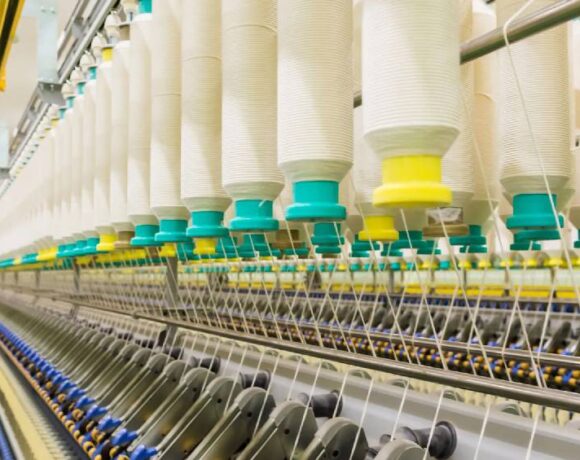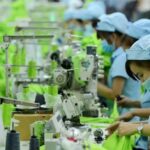Rising Stars In Babywear: How India, Bangladesh And Vietnam Are Redefining The Global Market

Babywear apparel is an essential and ever-evolving segment of the global fashion industry. In 2022, the world witnessed a notable upswing in the exports of babywear apparels compared to the previous year, with a 2.27% increase in trade totaling an impressive US$ 11,265.96 million. This article delves into the key trends and insights shaping the global babywear apparel export market in 2022, highlighting the leading exporting nations, market dynamics and fibre preferences.
Global Trends
China, India and Bangladesh: These three nations stood out as the major players in the global babywear apparel export arena. While China faced a modest decline of 2.12% in exports, India and Bangladesh displayed remarkable growth rates of 9.58% and 5.71%, respectively, in 2022. Vietnam also emerged as a rising exporter, with a significant 15.82% growth in exports in 2021.

Key Markets: The United States emerged as the primary market for babywear apparel among these exporting nations, single-handedly accounting for a staggering 25% of global babywear imports. In 2022, the US saw a 9.91% growth in imports, reaching US$ 2,773.23 million. France overtook Germany to become the second-largest importer, with imports valued at US$ 825.30 million, capturing 8% share. Germany, meanwhile, slipped to the third position, with imports totaling US$ 807.86 million. An intriguing trend emerged in Nigeria, with imports skyrocketing by 1071.45% in 2022, suggesting its potential as a burgeoning market for babywear apparel manufacturers.
Segment and Fibre Preferences: Knitted babywear apparel dominated the market, comprising 79% of global exports, totaling US$ 8,898.33 million in 2022, with a modest growth of 0.50%. Woven babywear accounted for the remaining 21%, reaching US$ 2,367.63 million, registering a substantial growth rate of 9.50%. Cotton remained the favored fibre for baby garments worldwide, commanding a 78% share of total exports, amounting to US$ 8,780.93 million, with a growth of 1.20%. Synthetic fibre held a 15% share, with exports reaching US$ 1,658.87 million and a growth rate of 9% in 2022. Other textile materials contributed US$ 826.16 million in exports, growing by 1.05%.
India’s Role in Babywear Apparel Exports
India emerged as a notable manufacturer and exporter in the global babywear apparel market, contributing 12% of the world’s total exports, totaling US$ 1,318.01 million in 2022, with a growth rate of 9.58%. Knitted babywear apparel from India was in high demand, accounting for 82% of total exports, reaching US$ 1,078.20 million, with a growth of 6.64%. Woven babywear from India also experienced growth, surging by 25.10% to US$ 239.84 million in 2022.
In terms of fibre, cotton garments for babies were the most exported from India, representing 76% of total exports, amounting to US$ 1,005.52 million, with a growth of 10.39% in 2022. Within this category, knitted cotton garments reached US$ 850.56 million, growing by 7.53%, while woven cotton apparel surged by 29.24% to US$ 154.96 million. Other textile materials were the second most-exported fibre for babies’ apparel from India, contributing US$ 271.47 million in exports, growing by 12.84%. Knitted exports under this category reached US$ 205.31 million, with 8.80% growth, while woven exports were US$ 66.16 million, showing a significant growth of 27.51%. Synthetic fibre was the only segment to record negative growth in India’s babywear exports, falling by 20.06% to US$ 41.03 million in 2022.

Key Markets for India: The United States and the United Kingdom were pivotal markets for India’s babywear apparel exports. The US was the largest market, with exports totaling US$ 455.14 million, marking a growth of 13.56% in 2022. Knitted cotton babywear was the most-exported commodity to the US, capturing a 74% share. The UK emerged as the second-largest market, with US$ 198.49 million in exports, growing by 7.80%. Yemen and Malaysia also witnessed remarkable growth rates of 137.70% and 269.22%, respectively, making them potential markets for Indian babywear manufacturers.
China’s Babywear Export Trends
China, despite a 2.12% decline in exports, remained a significant player in the global babywear market. Cotton knitted garments, constituting 62% of total exports, fell by 4.78% to US$ 1,607.95 million. Knitted synthetic fibre garments, the second-largest segment, increased marginally by 0.07% to US$ 461.40 million, representing 18% of total exports. Woven synthetic fibre garments grew by 10.52% to US$ 219.08 million. However, woven cotton garment demand from China dropped by 4.62% to US$ 192.13 million, with a 7% share of total babywear exports.
The US remained the largest market for Chinese babywear apparel, with exports totaling US$ 632.95 million, although showing a decline of 10.10%. Japan, the second-largest market, saw exports drop by 13.75% to US$ 204.90 million. France showed promise, with babywear exports reaching US$ 199.36 million, growing by 11.28%.
Bangladesh’s Babywear Export Growth
Bangladesh experienced a 5.71% growth in babywear apparel exports, reaching US$ 1,709.96 million in 2022. Cotton knitted garments, representing 72% of total babywear exports, grew by 3.55% to US$ 1,230.51 million. Cotton woven garment exports increased by 9.14% to US$ 346.85 million, contributing 20% to total exports. Both synthetic fibre knitted and woven garments witnessed significant growth rates of 16.91% and 25.06%, respectively, contributing 3% each to total exports.
In conclusion, the global babywear apparel export market in 2022 exhibited dynamic trends, with India emerging as a growing powerhouse in the industry. While China faced challenges, India and Bangladesh showcased robust growth, and Vietnam signaled its emergence as an exporter. The preference for knitted apparel and cotton fibre remained dominant globally, but synthetic fibre and other textile materials also played important roles. The key markets for these exports continued to be the United States, United Kingdom and France, with potential growth in markets like Yemen, Malaysia and Nigeria offering exciting opportunities for manufacturers and exporters in the babywear apparel sector.
(This article is written by Henry Dsouza)















